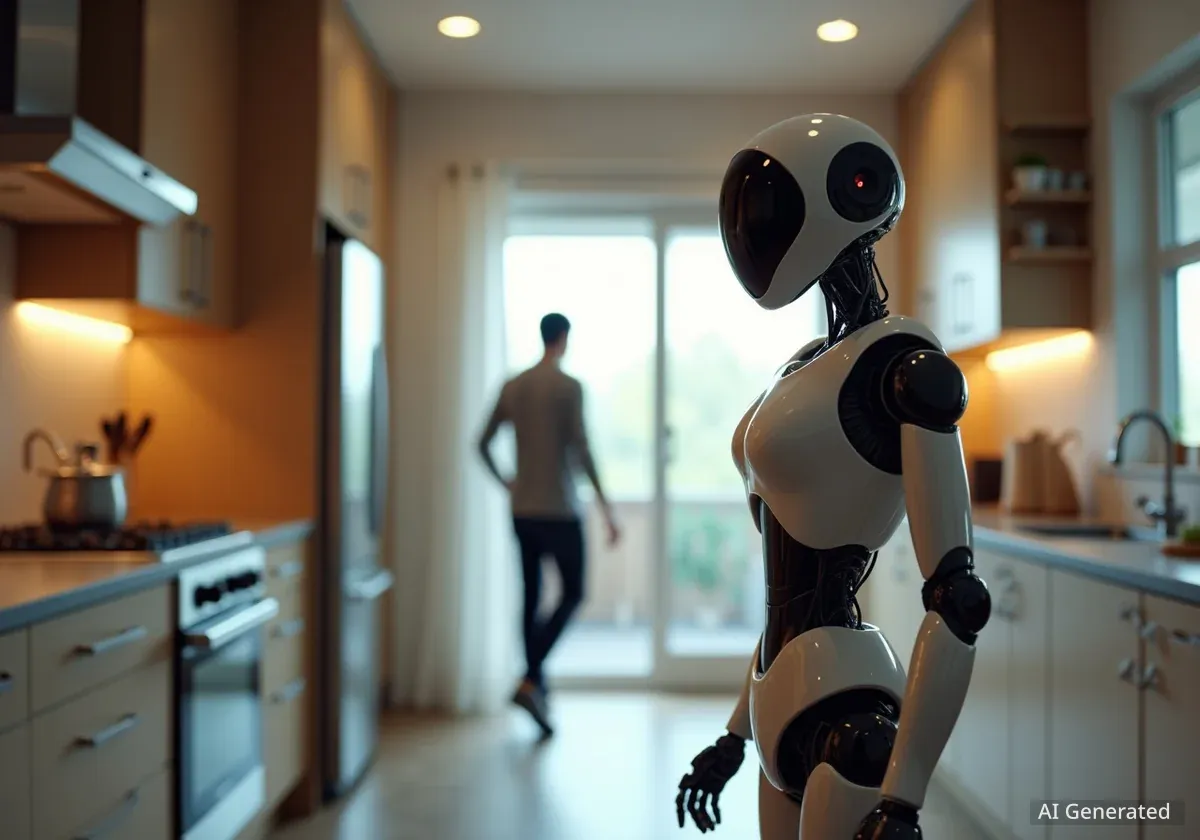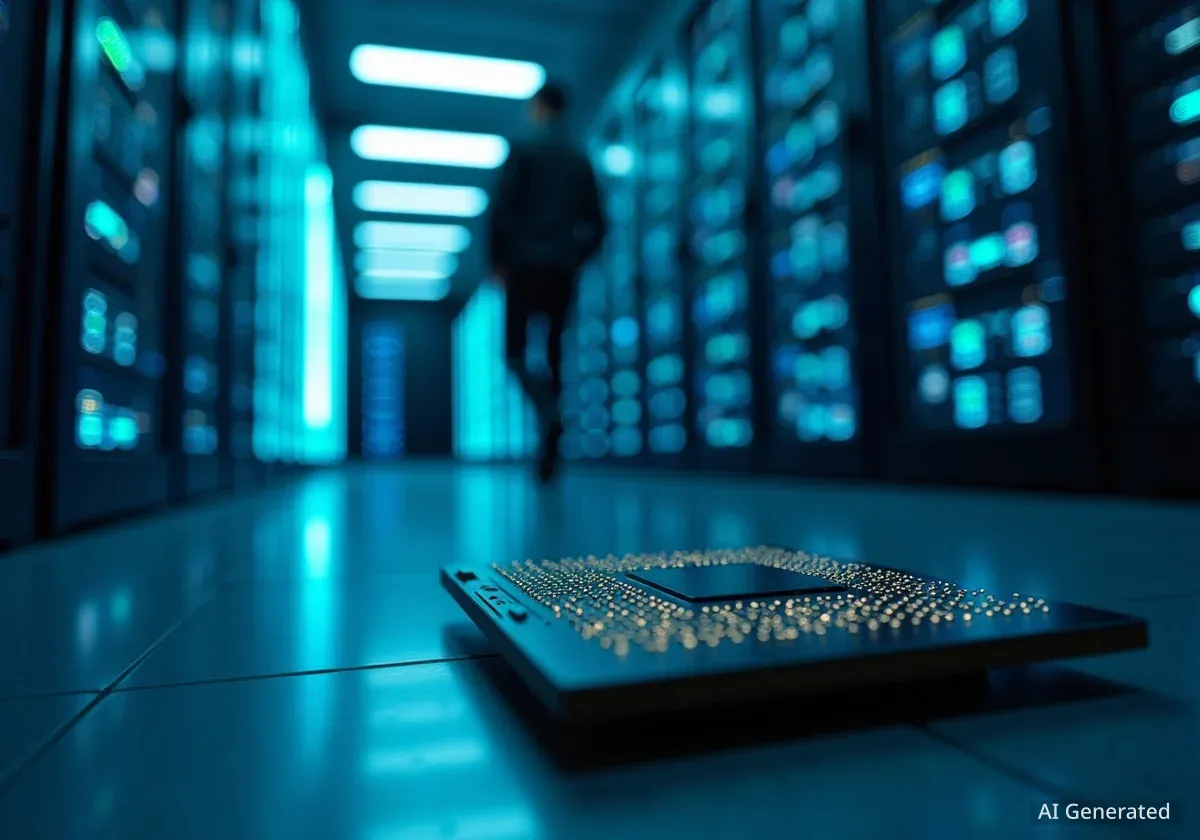The technology company Figure AI has introduced its humanoid robot, the Figure 03, with the goal of integrating it into the global workforce and eventually, private homes. The company's CEO, Brett Adcock, stated an ambitious timeline, aiming to place the robot in select households as early as next year, signaling a major step toward general-purpose robotics in daily life.
Launched in October, the Figure 03 can already perform some domestic chores, such as folding laundry and loading a dishwasher. However, these tasks currently require human supervision and assistance, highlighting the technology's current stage of development. The company is actively working to advance its capabilities through extensive data collection for its AI system.
Key Takeaways
- Figure AI has developed the Figure 03, a humanoid robot designed for both industrial and domestic applications.
- The robot can perform simple household tasks but still requires human assistance for completion.
- CEO Brett Adcock has announced a goal to deploy the Figure 03 in some homes by next year.
- The robot operates on the Helix neural network, which is being trained with large datasets to improve its autonomy and skill set.
The Vision for a General-Purpose Robot
Figure AI was founded with a clear and ambitious objective: to create a humanoid robot that can perform a wide range of tasks across various sectors of the economy. The design of the Figure 03, which mimics the human form, is intentional. The company believes a human-like body is best suited to operate in environments built for people, from warehouses and factories to offices and homes.
The long-term strategy is to address labor shortages and automate dangerous or repetitive jobs. By developing a robot that can adapt to different roles, Figure AI aims to create a versatile tool that can be deployed without requiring significant changes to existing infrastructure. This vision places the company in direct competition with other firms developing humanoid robots, such as Tesla with its Optimus project and Boston Dynamics.
What is a Humanoid Robot?
A humanoid robot is a robot with its body shape built to resemble the human body. This design allows it to use human tools and equipment, navigate environments designed for people, and interact with humans in a more intuitive way. The development of functional humanoid robots is considered a major milestone in robotics and artificial intelligence.
The company's focus extends beyond the industrial sector. Placing the Figure 03 in homes represents a significant part of its mission, aiming to assist with daily chores and eventually provide companionship or care. This dual-market approach—industrial and domestic—is a key element of Figure AI's business model.
Current Abilities and Developmental Hurdles
Upon its debut, the Figure 03 demonstrated its ability to handle basic household tasks. Videos and demonstrations have shown the robot carefully picking up and folding articles of clothing and placing dishes into a dishwasher rack. These actions showcase progress in fine motor skills and object recognition, which are critical challenges in robotics.
However, the robot's autonomy is still limited. For example, while it can load a dishwasher, a human is needed to add detergent and start the washing cycle. If the robot drops an item, it may require human help to recover. These limitations indicate that the robot is currently a tool that assists humans rather than a fully independent agent.
The Challenge of Dexterity
Replicating the dexterity of the human hand is one of the most difficult engineering problems in robotics. The ability to grasp objects of different shapes, sizes, and fragility requires a complex combination of sensors, actuators, and intelligent software. Figure AI's progress in tasks like folding clothes is a notable step in this area.
Overcoming these hurdles is the primary focus of the company's research and development. The path to full autonomy involves improving the robot's ability to problem-solve, adapt to unexpected situations, and learn from its mistakes without constant human intervention.
The Role of the Helix Neural Network
At the core of the Figure 03's learning capability is its AI brain, powered by what the company calls the Helix neural network. This system is responsible for processing sensory input, controlling the robot's movements, and enabling it to learn new tasks. Like many modern AI systems, its performance is heavily dependent on the quality and quantity of data it is trained on.
Data Collection as a Priority
Figure AI has initiated a large-scale data collection campaign to train and refine the Helix model. This process involves gathering vast amounts of information on how tasks are performed, which helps the robot understand the nuances of physical interaction. The more data the network processes, the better it becomes at generalizing its skills to new, unseen tasks.
"Robotics is on a similar curve to digital AI," stated CEO Brett Adcock, suggesting that the industry is on the verge of rapid, exponential growth in capabilities, much like what has been seen with large language models in recent years.
This comparison implies that once foundational challenges are solved, the rate of improvement could accelerate dramatically. Adcock's statement frames the current limitations not as permanent roadblocks but as temporary stages in a fast-moving developmental cycle. The success of this data-driven approach will be crucial for achieving the company's goals.
Timeline and Future Outlook
The goal to have the Figure 03 in select homes by next year is highly ambitious and underscores the company's confidence in its rapid development cycle. This initial deployment would likely be a pilot program, allowing Figure AI to gather real-world data on how the robot performs in unstructured home environments.
The challenges of operating in a home are significantly different from those in a controlled factory setting. Homes are dynamic and unpredictable, with changing layouts, obstacles, and the presence of people and pets. A successful home deployment would represent a major technical achievement.
Looking further ahead, the widespread adoption of humanoid robots could have profound implications for the economy and society. It could reshape labor markets, increase productivity, and change the way people manage their daily lives. While the vision of a robot in every home is still distant, Figure AI's work with the Figure 03 is a clear step in that direction.





